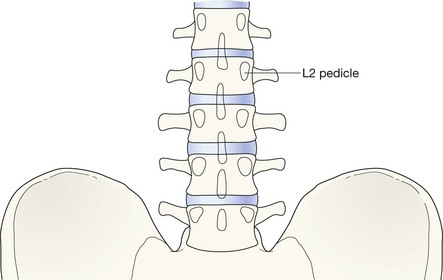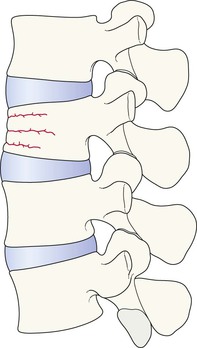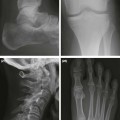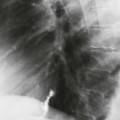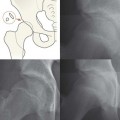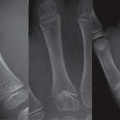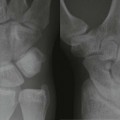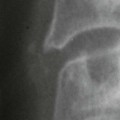The standard radiographs Lateral and AP views. Abbreviations AP, anterior-posterior; L1, the 1st lumbar vertebra; T6, the 6th thoracic vertebra. ▪ The vertical contour of the lumbar spine is a smooth unbroken arc. ▪ The vertebral bodies are the same height anteriorly and posteriorly. ▪ The posterior margin of each vertebral body is slightly concave. The concept of a three column spine1 is a familiar one when evaluating a CT or MRI examination. This anatomical concept can also be applied to the lateral radiograph. In the thoracic spine the soft tissue shadow of the left paraspinal line (aka paravertebral stripe) should be closely applied to the vertebral bodies. This line is produced by the interface between the paravertebral soft tissues and the adjacent lung. On the right side there is no visible paraspinal line5,6. ▪ The AP projection can provide useful information, but the lateral radiograph is invariably the more useful. 70–90% of detectable plain film abnormalities will be shown on the lateral projection7,8. Also, it is the lateral radiograph to which the three column stability principle1–3 is applied: “Instability is present if any two of the three columns are disrupted” Look for: ▪ Loss of height or wedging of a vertebral body: this is evidence of a compression fracture. Wedging may be associated with loss of the normal concavity of the posterior aspect of the vertebral body9. This loss indicates significant posterior displacement of the middle column. ▪ Fragment(s) of bone detached from the anterior aspect of a vertebral body.
Thoracic & lumbar spine
Normal anatomy
Lateral view—thoracic and lumbar vertebrae1–4

The three column spine
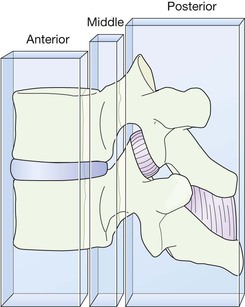
AP view—thoracic vertebrae
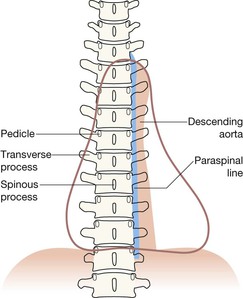
Analysis: the checklists
On the lateral view

